Molecule Information
General Information of the Molecule (ID: Mol00254)
| Name |
Baculoviral IAP repeat-containing protein 1 (BIRC1)
,Homo sapiens
|
||||
|---|---|---|---|---|---|
| Synonyms |
Neuronal apoptosis inhibitory protein; BIRC1
Click to Show/Hide
|
||||
| Molecule Type |
Protein
|
||||
| Gene Name |
NAIP
|
||||
| Gene ID | |||||
| Location |
chr5:70968166-71025339[-]
|
||||
| Sequence |
MATQQKASDERISQFDHNLLPELSALLGLDAVQLAKELEEEEQKERAKMQKGYNSQMRSE
AKRLKTFVTYEPYSSWIPQEMAAAGFYFTGVKSGIQCFCCSLILFGAGLTRLPIEDHKRF HPDCGFLLNKDVGNIAKYDIRVKNLKSRLRGGKMRYQEEEARLASFRNWPFYVQGISPCV LSEAGFVFTGKQDTVQCFSCGGCLGNWEEGDDPWKEHAKWFPKCEFLRSKKSSEEITQYI QSYKGFVDITGEHFVNSWVQRELPMASAYCNDSIFAYEELRLDSFKDWPRESAVGVAALA KAGLFYTGIKDIVQCFSCGGCLEKWQEGDDPLDDHTRCFPNCPFLQNMKSSAEVTPDLQS RGELCELLETTSESNLEDSIAVGPIVPEMAQGEAQWFQEAKNLNEQLRAAYTSASFRHMS LLDISSDLATDHLLGCDLSIASKHISKPVQEPLVLPEVFGNLNSVMCVEGEAGSGKTVLL KKIAFLWASGCCPLLNRFQLVFYLSLSSTRPDEGLASIICDQLLEKEGSVTEMCVRNIIQ QLKNQVLFLLDDYKEICSIPQVIGKLIQKNHLSRTCLLIAVRTNRARDIRRYLETILEIK AFPFYNTVCILRKLFSHNMTRLRKFMVYFGKNQSLQKIQKTPLFVAAICAHWFQYPFDPS FDDVAVFKSYMERLSLRNKATAEILKATVSSCGELALKGFFSCCFEFNDDDLAEAGVDED EDLTMCLMSKFTAQRLRPFYRFLSPAFQEFLAGMRLIELLDSDRQEHQDLGLYHLKQINS PMMTVSAYNNFLNYVSSLPSTKAGPKIVSHLLHLVDNKESLENISENDDYLKHQPEISLQ MQLLRGLWQICPQAYFSMVSEHLLVLALKTAYQSNTVAACSPFVLQFLQGRTLTLGALNL QYFFDHPESLSLLRSIHFPIRGNKTSPRAHFSVLETCFDKSQVPTIDQDYASAFEPMNEW ERNLAEKEDNVKSYMDMQRRASPDLSTGYWKLSPKQYKIPCLEVDVNDIDVVGQDMLEIL MTVFSASQRIELHLNHSRGFIESIRPALELSKASVTKCSISKLELSAAEQELLLTLPSLE SLEVSGTIQSQDQIFPNLDKFLCLKELSVDLEGNINVFSVIPEEFPNFHHMEKLLIQISA EYDPSKLVKLIQNSPNLHVFHLKCNFFSDFGSLMTMLVSCKKLTEIKFSDSFFQAVPFVA SLPNFISLKILNLEGQQFPDEETSEKFAYILGSLSNLEELILPTGDGIYRVAKLIIQQCQ QLHCLRVLSFFKTLNDDSVVEIAKVAISGGFQKLENLKLSINHKITEEGYRNFFQALDNM PNLQELDISRHFTECIKAQATTVKSLSQCVLRLPRLIRLNMLSWLLDADDIALLNVMKER HPQSKYLTILQKWILPFSPIIQK Click to Show/Hide
|
||||
| Function |
Anti-apoptotic protein which acts by inhibiting the activities of CASP3, CASP7 and CASP9. Can inhibit the autocleavage of pro-CASP9 and cleavage of pro-CASP3 by CASP9. Capable of inhibiting CASP9 autoproteolysis at 'Asp-315' and decreasing the rate of auto proteolysis at 'Asp-330'. Acts as a mediator of neuronal survival in pathological conditions. Prevents motor-neuron apoptosis induced by a variety of signals. Possible role in the prevention of spinal muscular atrophy that seems to be caused by inappropriate persistence of motor-neuron apoptosis: mutated or deleted forms of NAIP have been found in individuals with severe spinal muscular atrophy.; FUNCTION: Acts as a sensor component of the NLRC4 inflammasome that specifically recognizes and binds needle protein CprI from pathogenic bacteria C.violaceum. Association of pathogenic bacteria proteins drives in turn drive assembly and activation of the NLRC4 inflammasome, promoting caspase-1 activation, cytokine production and macrophage pyroptosis. The NLRC4 inflammasome is activated as part of the innate immune response to a range of intracellular bacteria such as C.violaceum and L.pneumophila.
Click to Show/Hide
|
||||
| Uniprot ID | |||||
| Ensembl ID | |||||
| HGNC ID | |||||
| Click to Show/Hide the Complete Species Lineage | |||||
Type(s) of Resistant Mechanism of This Molecule
Drug Resistance Data Categorized by Drug
Approved Drug(s)
3 drug(s) in total
| Drug Resistance Data Categorized by Their Corresponding Mechanisms | ||||
|
|
||||
| Disease Class: Pituitary adenoma | [1] | |||
| Resistant Disease | Pituitary adenoma [ICD-11: 2F37.1] | |||
| Resistant Drug | Carboplatin | |||
| Molecule Alteration | Expression | Up-regulation |
||
| Experimental Note | Identified from the Human Clinical Data | |||
| In Vitro Model | Pituitary tumour stem-like cells | Pituitary | Homo sapiens (Human) | N.A. |
| In Vivo Model | NOD/SCID mice xenograft model | Mus musculus | ||
| Experiment for Molecule Alteration |
qRT-PCR | |||
| Experiment for Drug Resistance |
WST-1 proliferation assay | |||
| Mechanism Description | Stem cells are generally known to preferentially express antiapoptotic genes, such as BCL-2, cIAP1, NAIP, and XIAP.The expression levels of these antiapoptotic genes in PASC1 were one- to sixfolds higher than those in its daughter cells. | |||
| Drug Resistance Data Categorized by Their Corresponding Mechanisms | ||||
|
|
||||
| Disease Class: Neuroblastoma | [2] | |||
| Resistant Disease | Neuroblastoma [ICD-11: 2A00.11] | |||
| Resistant Drug | Cisplatin | |||
| Molecule Alteration | Expression | Up-regulation |
||
| Experimental Note | Revealed Based on the Cell Line Data | |||
| Cell Pathway Regulation | Cell apoptosis | Inhibition | hsa04210 | |
| Cell invasion | Activation | hsa05200 | ||
| Cell migration | Activation | hsa04670 | ||
| In Vitro Model | Sk-N-AS cells | Adrenal | Homo sapiens (Human) | CVCL_1700 |
| Experiment for Molecule Alteration |
Western blot analysis | |||
| Experiment for Drug Resistance |
Acid phosphatase assay | |||
| Mechanism Description | Significant overexpression of NAIP mRNA and protein was documented, while experimental modulation of NAIP levels in both Sk-N-AsCis24 and in parental Sk-N-AS cells confirmed that NAIP was responsible for the drug resistant phenotype by apoptosis inhibition. Furthermore, a decrease in the NAIP targeting microRNA, miR-520f, was also demonstrated to be partially responsible for increased NAIP levels in Sk-N-AsCis24. Interestingly, miR-520f levels were determined to be significantly lower in postchemotherapy treatment tumours relative to matched prechemotherapy samples, consistent with a role for this miRNA in the acquisition of drug resistance in vivo, potentially through decreased NAIP targeting. | |||
| Drug Resistance Data Categorized by Their Corresponding Mechanisms | ||||
|
|
||||
| Disease Class: Pituitary adenoma | [1] | |||
| Resistant Disease | Pituitary adenoma [ICD-11: 2F37.1] | |||
| Resistant Drug | Etoposide | |||
| Molecule Alteration | Expression | Up-regulation |
||
| Experimental Note | Identified from the Human Clinical Data | |||
| In Vitro Model | Pituitary tumour stem-like cells | Pituitary | Homo sapiens (Human) | N.A. |
| In Vivo Model | NOD/SCID mice xenograft model | Mus musculus | ||
| Experiment for Molecule Alteration |
qRT-PCR | |||
| Experiment for Drug Resistance |
WST-1 proliferation assay | |||
| Mechanism Description | Stem cells are generally known to preferentially express antiapoptotic genes, such as BCL-2, cIAP1, NAIP, and XIAP.The expression levels of these antiapoptotic genes in PASC1 were one- to sixfolds higher than those in its daughter cells. | |||
Disease- and Tissue-specific Abundances of This Molecule
ICD Disease Classification 02

| Differential expression of molecule in resistant diseases | ||
| The Studied Tissue | Nervous tissue | |
| The Specified Disease | Brain cancer | |
| The Expression Level of Disease Section Compare with the Healthy Individual Tissue | p-value: 1.12E-13; Fold-change: 3.53E-01; Z-score: 4.21E-01 | |
|
Molecule expression in the diseased tissue of patients
Molecule expression in the normal tissue of healthy individuals
|
||
| Disease-specific Molecule Abundances |
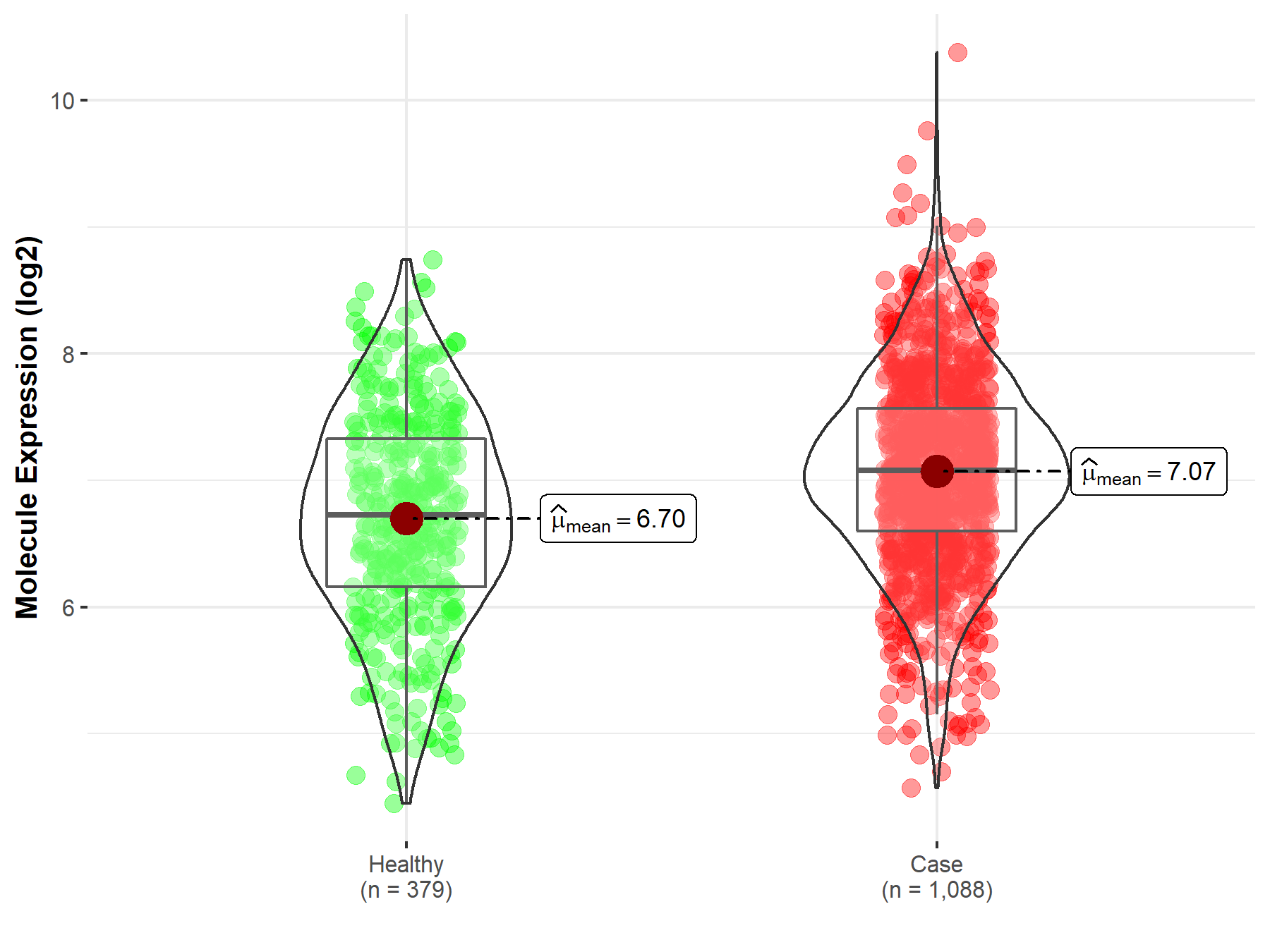
|
Click to View the Clearer Original Diagram |
| The Studied Tissue | Brainstem tissue | |
| The Specified Disease | Glioma | |
| The Expression Level of Disease Section Compare with the Healthy Individual Tissue | p-value: 4.20E-01; Fold-change: -3.43E-01; Z-score: -7.70E-01 | |
|
Molecule expression in the diseased tissue of patients
Molecule expression in the normal tissue of healthy individuals
|
||
| Disease-specific Molecule Abundances |
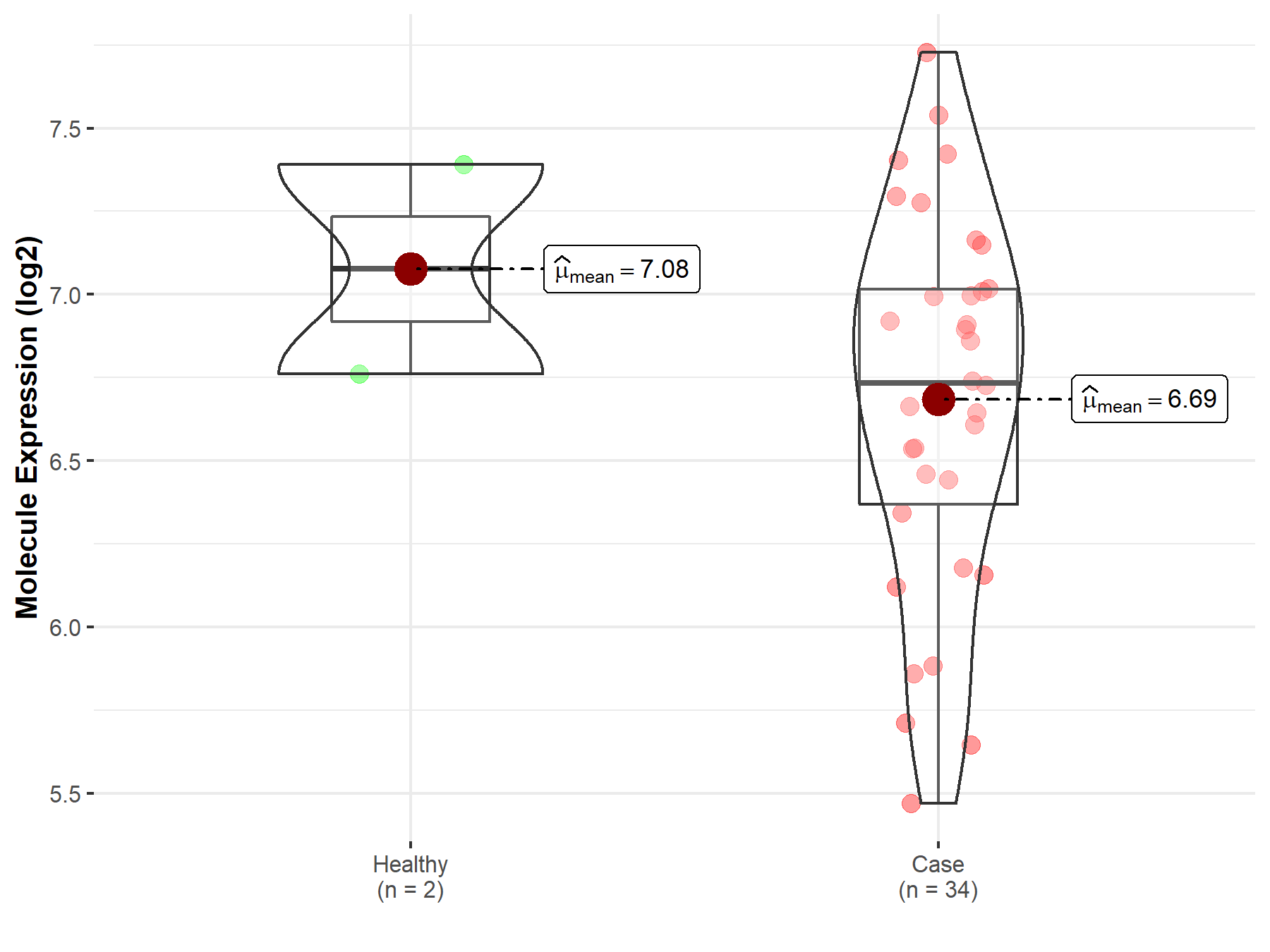
|
Click to View the Clearer Original Diagram |
| The Studied Tissue | White matter | |
| The Specified Disease | Glioma | |
| The Expression Level of Disease Section Compare with the Healthy Individual Tissue | p-value: 3.98E-01; Fold-change: -4.36E-01; Z-score: -5.46E-01 | |
|
Molecule expression in the diseased tissue of patients
Molecule expression in the normal tissue of healthy individuals
|
||
| Disease-specific Molecule Abundances |
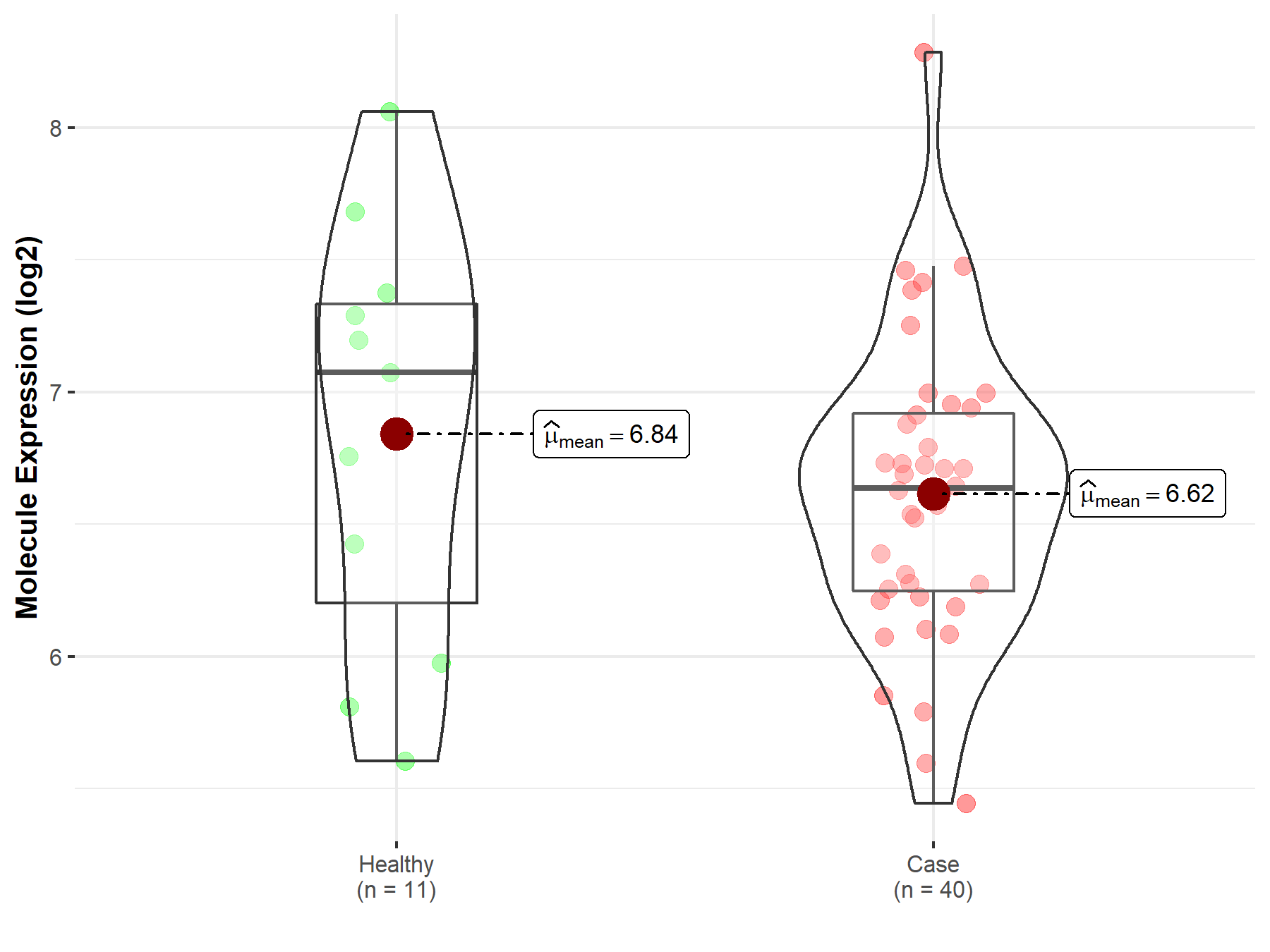
|
Click to View the Clearer Original Diagram |
| The Studied Tissue | Brainstem tissue | |
| The Specified Disease | Neuroectodermal tumor | |
| The Expression Level of Disease Section Compare with the Healthy Individual Tissue | p-value: 3.70E-01; Fold-change: 9.93E-02; Z-score: 1.46E-01 | |
|
Molecule expression in the diseased tissue of patients
Molecule expression in the normal tissue of healthy individuals
|
||
| Disease-specific Molecule Abundances |

|
Click to View the Clearer Original Diagram |
| Differential expression of molecule in resistant diseases | ||
| The Studied Tissue | Pituitary | |
| The Specified Disease | Pituitary cancer | |
| The Expression Level of Disease Section Compare with the Healthy Individual Tissue | p-value: 4.82E-01; Fold-change: -1.39E-01; Z-score: -2.31E-01 | |
|
Molecule expression in the diseased tissue of patients
Molecule expression in the normal tissue of healthy individuals
|
||
| Disease-specific Molecule Abundances |
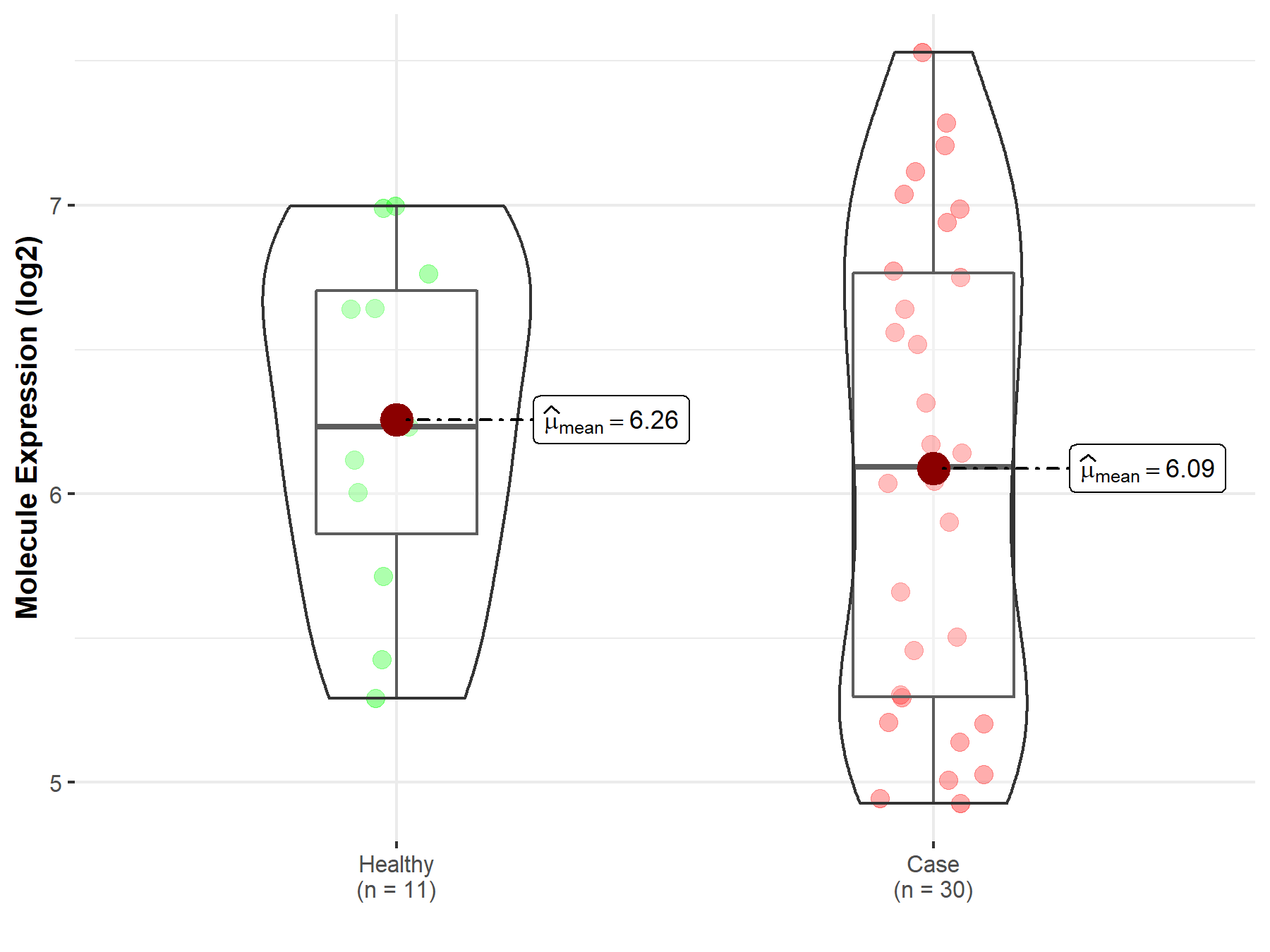
|
Click to View the Clearer Original Diagram |
| The Studied Tissue | Pituitary | |
| The Specified Disease | Pituitary gonadotrope tumor | |
| The Expression Level of Disease Section Compare with the Healthy Individual Tissue | p-value: 1.36E-01; Fold-change: 5.33E-01; Z-score: 7.48E-01 | |
|
Molecule expression in the diseased tissue of patients
Molecule expression in the normal tissue of healthy individuals
|
||
| Disease-specific Molecule Abundances |
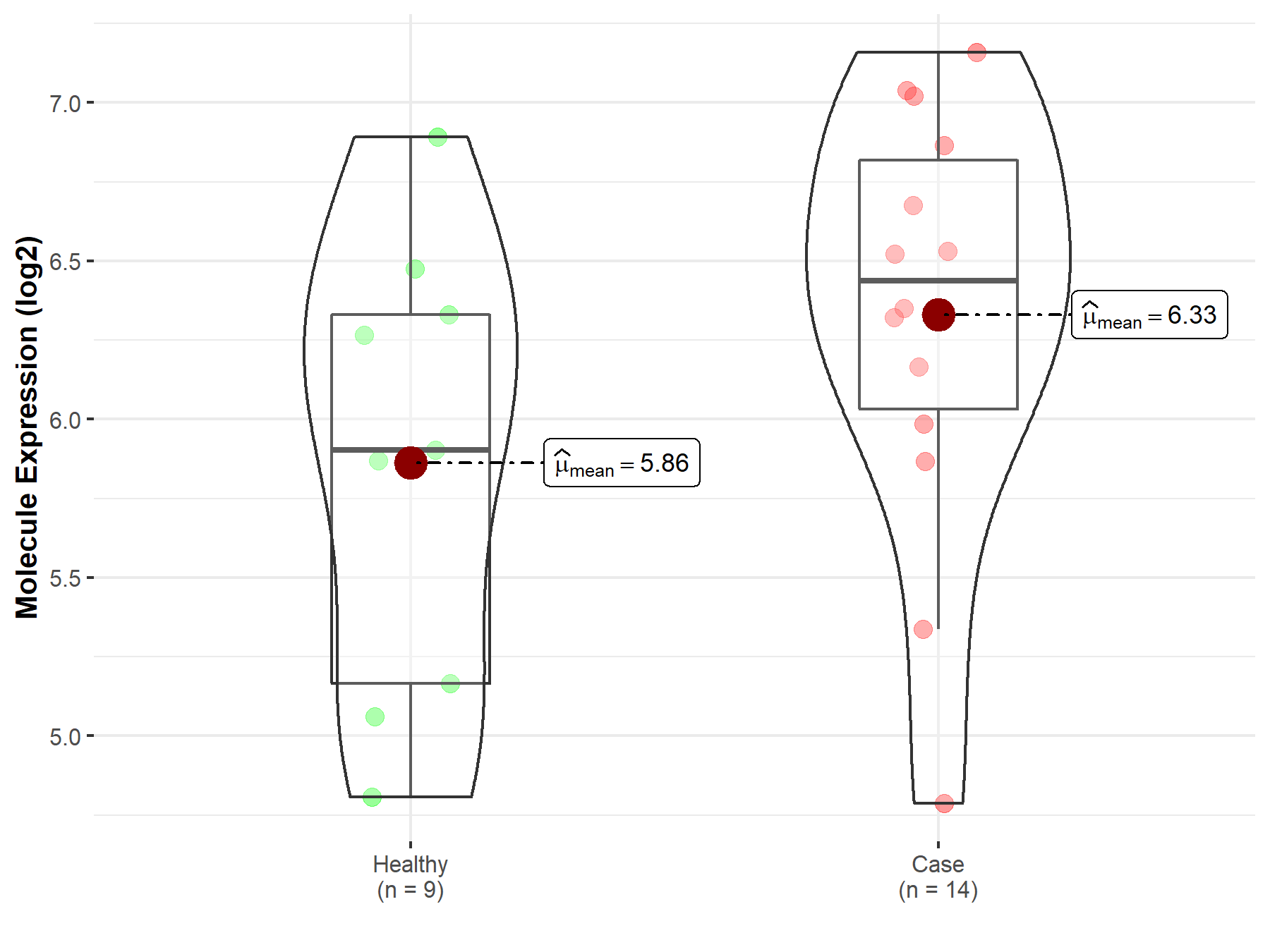
|
Click to View the Clearer Original Diagram |
Tissue-specific Molecule Abundances in Healthy Individuals

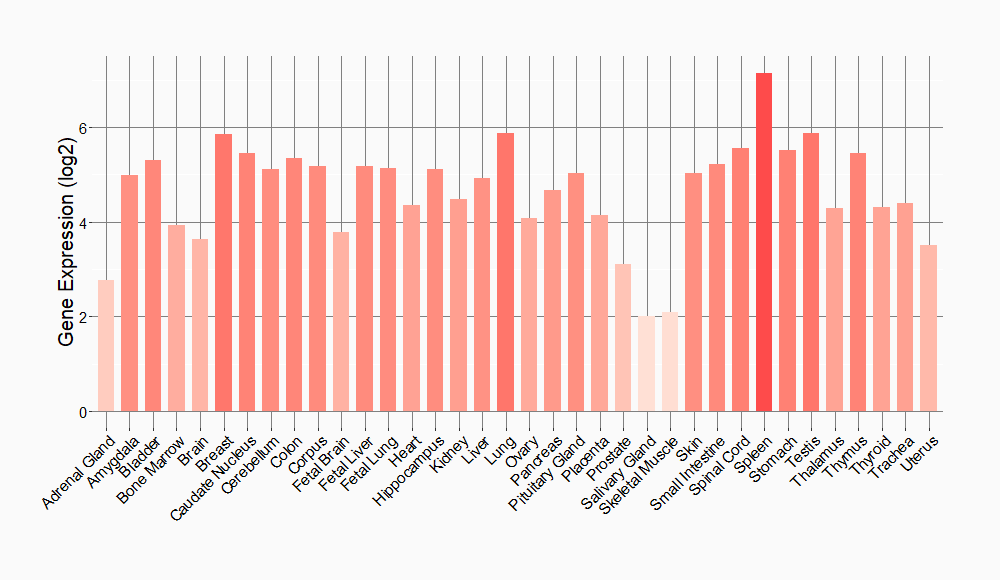
|
||
References
If you find any error in data or bug in web service, please kindly report it to Dr. Sun and Dr. Zhang.
